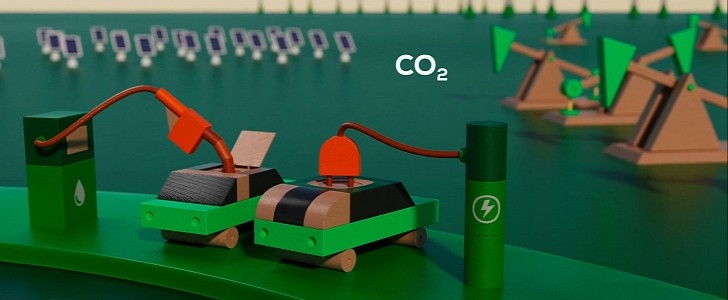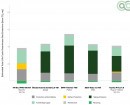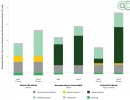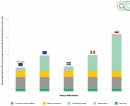Many people still believe that EVs are no better for the environment than ICE vehicles, especially when considering the pollution generated by the batteries. A new study from the European body Green NCAP that assesses the environmental impact throughout the vehicle’s lifecycle proves this is wrong.
Although electric cars do not generate tailpipe emissions, this does not mean that they are environmentally neutral. Building them generates greenhouse gases, but this is also true for gas-powered vehicles. The Li-Ion battery is what sets them apart, and this is generally considered to be a lot more polluting than building an engine. Starting with raw materials extraction, which involves aggressive mining and using some nasty chemicals, Li-Ion battery is thought to be EVs’ biggest problem.
And yet, new studies show that electric vehicles are still less polluting than gas-powered vehicles even when taking into account their entire lifecycle. This includes mining for raw materials, electricity generation, and scrapping the EV at the end of its lifecycle.
According to Green NCAP’s Life Cycle Assessment, electric vehicles generate most of their greenhouse-gas emissions during the production phase, while in the case of the ICEs, pollution is generated while burning fuel. This brings up the fact that electric vehicles tend to be lighter on the environment the more they stay on the road. The opposite is true when it comes to gas-powered vehicles.
For the analysis, Green NCAP took into account a nominal vehicle lifecycle of 16 years and 240,000 km (around 149,000 miles). In its assessment, the European body shows that an electric vehicle like the Volkswagen ID.3 is still better for the environment than a compact ICE car like the BMW 1 Series. It even trumps a Toyota Prius in this regard.
For our U.S. readers, it’s good to know that a Ford Mustang Mach-E is way better than a Ford Kuga (sold as Escape in the U.S.). While the latter emits between 48 and 61 tons of CO2 equivalent, the electric pony is only responsible for between 43 and 55 tons of CO2 equivalent throughout its lifecycle. If you want to see how every vehicle analyzed by Green NCAP fares in the environmental department there’s a comprehensive list of assessed vehicles on their website.
And yet, new studies show that electric vehicles are still less polluting than gas-powered vehicles even when taking into account their entire lifecycle. This includes mining for raw materials, electricity generation, and scrapping the EV at the end of its lifecycle.
According to Green NCAP’s Life Cycle Assessment, electric vehicles generate most of their greenhouse-gas emissions during the production phase, while in the case of the ICEs, pollution is generated while burning fuel. This brings up the fact that electric vehicles tend to be lighter on the environment the more they stay on the road. The opposite is true when it comes to gas-powered vehicles.
For the analysis, Green NCAP took into account a nominal vehicle lifecycle of 16 years and 240,000 km (around 149,000 miles). In its assessment, the European body shows that an electric vehicle like the Volkswagen ID.3 is still better for the environment than a compact ICE car like the BMW 1 Series. It even trumps a Toyota Prius in this regard.
For our U.S. readers, it’s good to know that a Ford Mustang Mach-E is way better than a Ford Kuga (sold as Escape in the U.S.). While the latter emits between 48 and 61 tons of CO2 equivalent, the electric pony is only responsible for between 43 and 55 tons of CO2 equivalent throughout its lifecycle. If you want to see how every vehicle analyzed by Green NCAP fares in the environmental department there’s a comprehensive list of assessed vehicles on their website.







